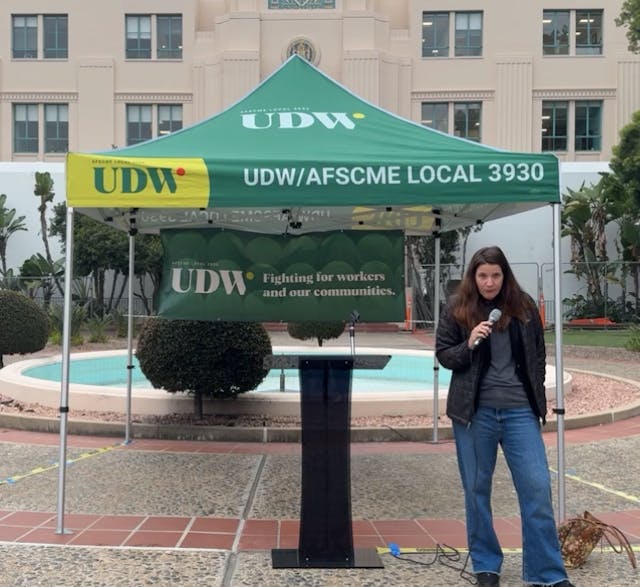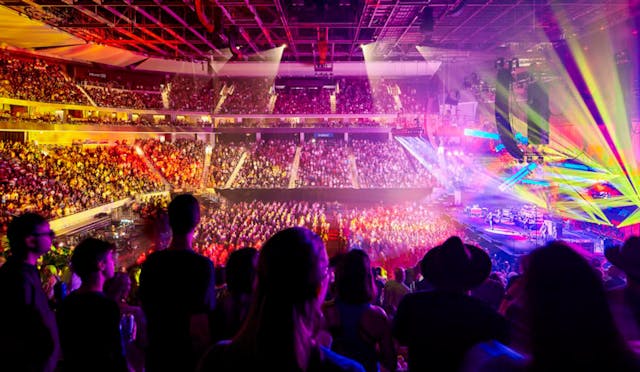Maya at theNAT

The discovery and exploration of Maya civilization has fascinated scholars, tourists, archeologists, professional and amateur historians alike.
Ancient Maya culture held a sophisticated worldview that rivaled European civilizations and a complex understanding of time, astronomy and agriculture. While the Maya calendar, artistry, spirituality and human sacrifice have captured imaginations, academic study has brought insight into the development and decline of an advanced society.
Beginning June 12, locals will get a closer look at this the ancient civilization and its achievements in the West Coast debut of Maya: Hidden Worlds Revealed at the San Diego Natural History Museum (theNAT). The touring exhibition is the largest on the ancient Maya to ever be displayed in the United States.
The museum is expecting 100,000 visitors during the course of its run through January, according to Michael Hager, president and CEO of theNAT.
“Every new exhibition is exciting; I get to learn something new each time,” Hager said. “But I’m most excited when our guests learn a lot from an exhibition – when they walk away saying, ‘Oh, I had no idea!’ It’s thrilling to me, and that’s why we exist.”
Visitors to the exhibition will learn about this mysterious civilization through the lives of commoners as well as rulers during the Classic period (250-900 AD).
“It’s a very nice balance between providing fun activities for the entire family and the opportunity for those with a more specific interest in Maya culture to dig in a bit deeper,” said Dominique Rissolo, archeologist and special projects coordinator from UCSD. Rissolo was brought on as a resident expert to help work with museum staff and the public on Maya.
“It will engage people in new and interesting ways, and allow them to really understand some of the topics that might seem incomprehensible or more challenging,” such as Maya calendrics, mathematics and language, he added.
The exhibition, which is presented in both English and Spanish, showcases 238 authentic artifacts on loan from several institutions, including Balboa Park’s own San Diego Museum of Man. Artifacts include gold coins, ancient jewelry, dental implants made of jade, sculpted animal demon spirits, detailed busts of rulers and gods, wall-sized glyphs and stone altars used for ceremony and human sacrifice.
The sculpted or painted glyphs are symbols that tell stories ranging from Maya daily life to rebirth and transcendence. Some of the Maya writing appears on massive chunks of colorful stone walls. Other glyphs describe royal succession, politics and epic battles on stelae, large obelisk-shaped columns.
Guests will hear and explore Maya language, deciphering glyphs and pronouncing vocabulary on large screens.
Dioramas, video and sound throughout the exhibit give insight into Maya architecture, city planning and construction.
By reassembling magnetized puzzle pieces on a metal frame, younger visitors get to be junior archaeologists, reconstructing pottery with images of the Maize god and Maya nobles. They can create Maya mosaics using colored wooden blocks on flat, upright boards.
In the calendar section, guests of all ages can use an onscreen Maya calendar to find and print out their Maya birthday and their own Maya names.
Large, interactive touchscreens give folks a chance to sort bones in an archeological find and try on Maya clothing — take a selfie and dress up your onscreen image as a Maya noble, scribe, ball player or soldier. In the archaeology exhibit, guests swipe a screen nearly the size of a coffee table to clear away the earth and uncover bones. The artifacts can then be dragged to a box on the screen that gives details about the skeletal remains, tools, stingray spines (used for bloodletting!) and other items found in the “dig.”
At the end of the exhibition, guests see and learn about modern Maya culture through videos, photos and displays.
People may be unaware that ethnic Maya remain in parts of Mexico and Central America.
“Much of Maya culture has persevered and exists, and in many ways thrives, right up until the present,” Rissolo said. “There is so much of what we know about the ancient Maya by what we observe and infer by working with modern Maya.”
Many retain the culture and traditions of their ancestors. At the exhibition, visitors will see contemporary Maya textiles created using many of the same tools, patterns and processes as their ancestors used. Despite the introduction of Catholicism, traditional religious beliefs persist among Maya peoples, and the ancient culture is reflected in their food, cooking and pottery.
And with San Diego’s proximity to the border, the city is a sure fit for the exhibit. The murals in Chicano Park, for example, feature many Maya references and images.
“It’s exciting for us to have this exhibition in San Diego, since we share a border with a country where, for Yucatec Maya, there are over 800,000 speakers,” Rissolo said. “This is not a geographically or even temporally remote culture, this is one that’s very close to us. We’re in a city and county where we have indigenous Mexican people who speak the languages of their ancestors.
“Although we’re looking at the trappings of ancient Maya civilization – the art, iconography and architecture – we’re also reminded that Maya are very much a living people. This notion of Maya having disappeared is sort of tragically inaccurate. We have thriving cultures that are so close to us here in San Diego, and of course in Mexico, Belize, Guatemala, Honduras and El Salvador.”
Maya will be on view at theNAT June 12 through Jan. 3, 2016. Tickets range from $11-29. Discounts are available for museum members.
For more information, visit www.sdnat.org/maya or the museum’s Facebook page at www.facebook.com/SanDiegoNaturalHistoryMuseum.






